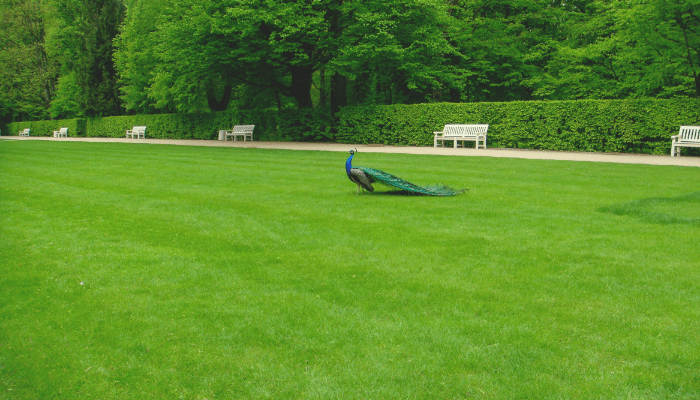Flower gardening looks effortless in magazines. Rows of perfectly blooming zinnias, bee-covered cosmos, and those smug little pots of pansies that somehow never die. But in real life? You plant twelve marigolds, and three survive. One blooms sideways. And a squirrel eats the rest.
Still worth it.
Because whether you’re growing flowers to cut, to cheer up your front porch, or just to prove you can keep something alive. There’s no faster path to instant beauty than flower gardening. It’s accessible, rewarding, and surprisingly forgiving once you learn a few key rules.
This guide breaks down the chaos. No fluff. No jargon. Just practical advice, beginner-friendly blooms, and a clear path to your first lush flower bed even if you’ve never touched a trowel before.
Let’s turn that patch of dirt (or those sad-looking pots) into something ridiculously beautiful.
Key Takeaways
- Flower gardening is accessible in any space, including small patios or indoor areas.
- Start with easy, low-maintenance flowers like zinnias, cosmos, and marigolds.
- Choose the right location with at least 6 hours of sun and well-drained soil.
- Mix annuals and perennials for continuous color through the seasons.
- Seeds are budget-friendly, but buying young plants offers faster results.
- Water deeply, mulch generously, and deadhead often to encourage blooming.
- Companion planting with flowers supports pollinators and repels pests.
- You do not need perfection to grow something beautiful. Just start planting.
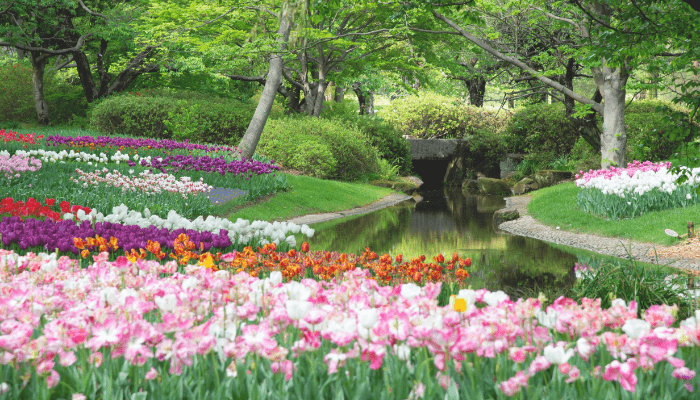
Why Try Flower Gardening?
Because the world needs more color. And fewer perfectly trimmed lawns.
Flower gardening isn’t just about pretty petals. It’s about pollinators, productivity, and planting something that gives back without demanding too much in return.
It boosts your mental health. It adds beauty to bland corners. And it reminds you that growth takes time but always pays off. Whether you want armloads of zinnias or just a few cheerful pansies on your balcony, flower gardening is low-risk, high-reward.
And honestly? Watching something bloom because of you feels kind of magical.
What Is Flower Gardening?
At its core, flower gardening is about growing flowering plants for intentional beauty, for bees, or for your own sanity.
It’s not the same as landscaping. It’s not about rigid symmetry or boxwood hedges. It’s about sowing seeds or planting starts and building a garden space that grows over time into a blooming, buzzing little ecosystem.
Whether you want a wild cottage vibe, a tidy cutting garden, or a border that stops traffic, flower gardening lets you create your own version of wow.
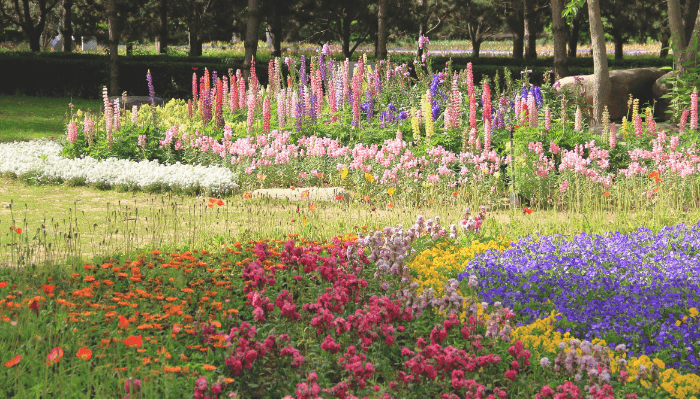
Best Flowers for Beginners
There are show-offs, and then there are dependable bloomers that don’t care if you forget to water them for two days. Start with the latter.
Easiest Annual Flowers to Grow
- Zinnias: Heat-loving, bright, and blooming nonstop. Total crowd-pleaser.
- Cosmos: Wispy, romantic, and tougher than they look.
- Sunflowers: Practically bulletproof and a favorite of bees and Instagram.
- Marigolds: Pest-deterring and impossible to mess up.
- Nasturtiums: Edible, cheerful, and thrive on neglect.
Beginner-Friendly Perennials
- Coneflowers (Echinacea): Come back stronger every year.
- Black-eyed Susans: Bright, bold, and loved by pollinators.
- Salvia: Drought-tolerant with long bloom times.
- Daylilies: Low effort, high impact.
- Lavender: Smells amazing, keeps bugs away, and thrives in the sun.
Best Flowers for Containers
- Petunias: Cascading color machines.
- Pansies: Happy in cool weather and ridiculously cute.
- Geraniums: Classic for a reason.
- Calibrachoa: Like mini petunias with more drama.
- Snapdragons: Spiky color and great for cut bouquets.
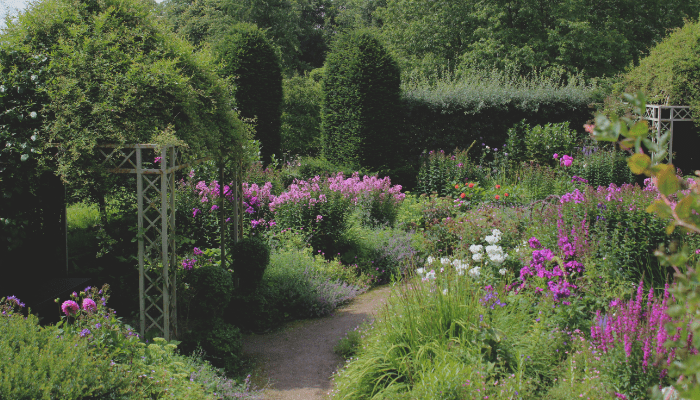
Planning Your Flower Garden
Start small. Seriously. You can always expand, but ripping out 30 confused plants is not fun.
Pick a spot with good sun (at least 6 hours). Observe it. Morning light is best. Afternoon sun can fry delicate blooms unless you’re planting desert dwellers.
Test your soil or just add compost and cross your fingers. It helps either way.
Think about your color palette. Or don’t. Chaos gardens can be beautiful too.
Choose flowers with different bloom times so something’s always happening from spring bulbs to summer showstoppers and fall perennials.
And use your vertical space! Arches, trellises, hanging baskets. They’re not just pretty. They’re practical.
Starting From Seeds vs. Buying Plants
Seeds pros:
- Cheap.
- Huge variety.
- Weirdly satisfying.
Seeds cons:
- Can be slow.
- Some need indoor starts or grow lights.
- Requires patience (and a label system).
Buying plants pros:
- Instant gratification.
- Less waiting. Less guessing.
- Easy for beginners who just want to get going.
Both work. Do what fits your timeline, budget, and tolerance for chaos. Want a quick win? Buy a few starts. Want to get hooked on germination? Grab seed packets and dive in.
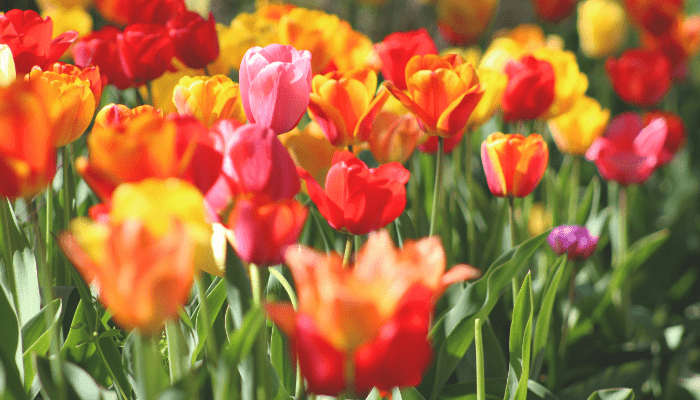
Soil, Watering, and Feeding Basics
Good flowers start with good dirt. That’s the rule.
Loamy, well-draining soil with organic matter is your goal. If your soil is rock-hard or sad clay, add compost. Like, a lot of it.
Water deeply but not constantly. Let soil dry slightly between waterings. Flowers don’t want wet socks.
Mulch to retain moisture, block weeds, and make your garden look intentional.
Fertilize lightly. Overfeeding leads to lots of leaves and not enough blooms. A balanced, slow-release fertilizer once or twice a season is usually plenty.
Flower Gardening by Season
Spring:
- Plant pansies, snapdragons, and sweet peas.
- Sow cosmos and zinnias once frost passes.
Summer:
- Deadhead regularly to keep blooms coming.
- Water consistently. Mornings are best.
Fall:
- Plant mums, asters, and ornamental kale.
- Collect seeds from spent flowers for next season.
Winter:
- Plan your layout.
- Order seeds.
- Start indoor bulbs like paperwhites or amaryllis.
Every season has something to offer, even if it’s just dreaming up next year’s flower lineup.
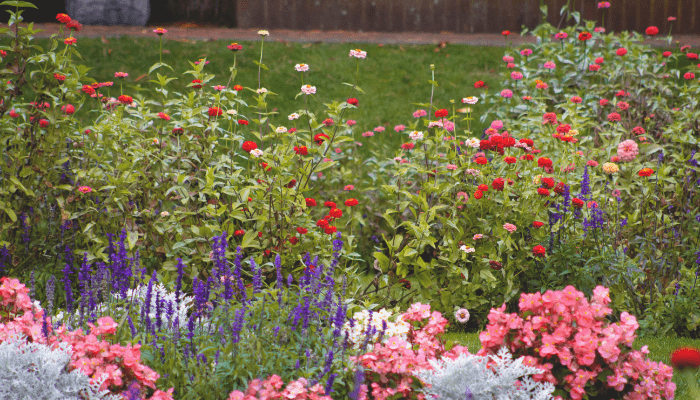
Cut Flower Gardening Tips
Want blooms for the house? You’ll need long stems, strong plants, and timing.
Cut in the morning when stems are fully hydrated. Use sharp, clean snips. Remove leaves that’ll sit in water. Change the water often.
Best cut flowers:
- Zinnias
- Snapdragons
- Cosmos
- Sunflowers
- Dahlias
- Yarrow
Harvest just before full bloom for longer vase life. And grow more than you think you need. Trust me.
Common Flower Gardening Mistakes
- Planting too close together. Airflow matters.
- Watering too much or too little. Your soil will tell you.
- Skipping deadheading. It’s not just aesthetic, it boosts blooms.
- Forgetting to stake tall flowers.
- Ignoring your local frost dates. Spring enthusiasm is dangerous.
Most problems are fixable. Observe. Adjust. Repeat.
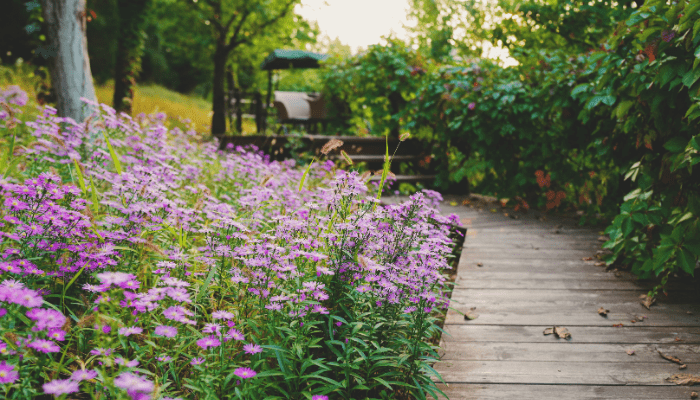
Companion Planting with Flowers
Mixing flowers with your veggies isn’t just pretty, it’s smart.
Some flowers attract pollinators. Others repel pests. Some do both while looking fantastic.
Great companions:
- Marigolds (deter nematodes and aphids)
- Nasturtiums (trap pests away from veggies)
- Calendula (repels mosquitoes and attracts good bugs)
- Borage (draws bees like a magnet)
Just make sure flowers don’t overshadow your edibles. Give everyone room to thrive.
Indoor Flower Gardening Tips
No yard? No problem. Light is the key to growing flowers indoors.
South-facing windows are gold. East-facing works for lower-light lovers.
Try:
- Geraniums
- Begonias
- Peace lilies
- Mini roses
- Bulbs in forcing jars
Use containers with drainage. Rotate plants weekly. And don’t forget to pinch off spent blooms.
Indoor flowers need attention, but they return it in color and calm.
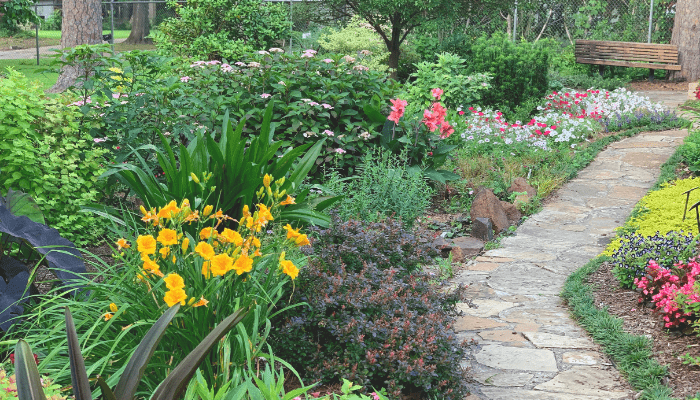
Conclusion
Flower gardening isn’t about perfection. It’s about color, life, and the joy of watching something thrive because you made it happen.
Your zinnias won’t always stand straight. Some seedlings will ghost you. A thunderstorm might trash your sunflowers the day before they bloom.
Keep planting anyway.
Because with each season, you’ll get better. You’ll learn when to sow, when to prune, and when to leave it alone. You’ll stop chasing Pinterest and start growing your own kind of beautiful.
Start with three flowers. One pot. Half an afternoon on a sunny Saturday.
That’s all it takes to begin.
Then, come back next year with gloves that are actually dirty and stories about bees and compost and how your coneflowers came back stronger than ever.
The garden doesn’t have to be perfect. It just has to be yours.
Want a flower garden that actually thrives? Oásis Biosistema designs beautiful, low-maintenance garden spaces that support pollinators and bloom with every season.
FAQ
What is the meaning of flower gardening?
Flower gardening is the practice of growing flowering plants for beauty, pollinators, or personal enjoyment. It involves planting, caring for, and arranging flowers in beds, containers, or landscapes. Flower gardening combines creativity and nature, offering aesthetic value, relaxation, and a connection to seasonal growth and outdoor spaces.
How to have the best flower garden?
To have the best flower garden, choose a sunny location, use well-draining soil, and plant a mix of annuals and perennials with staggered bloom times. Regular watering, mulching, deadheading, and feeding with balanced fertilizer keep flowers healthy. Plan by color, height, and season for a stunning, long-lasting display.
What is the easiest flower to grow in a garden?
Marigolds are among the easiest flowers to grow in a garden. They thrive in sun, tolerate poor soil, and require minimal care. Other beginner-friendly options include zinnias, cosmos, and sunflowers. These flowers grow quickly from seed, resist pests, and bloom throughout the season with little maintenance.
What flower blooms 365 days a year?
No outdoor flower blooms naturally 365 days a year, but certain indoor plants like peace lilies or African violets can bloom year-round with proper care. In tropical climates, hibiscus and bougainvillea may flower continuously. Year-round blooming depends on species, environment, and consistent watering, feeding, and light.



